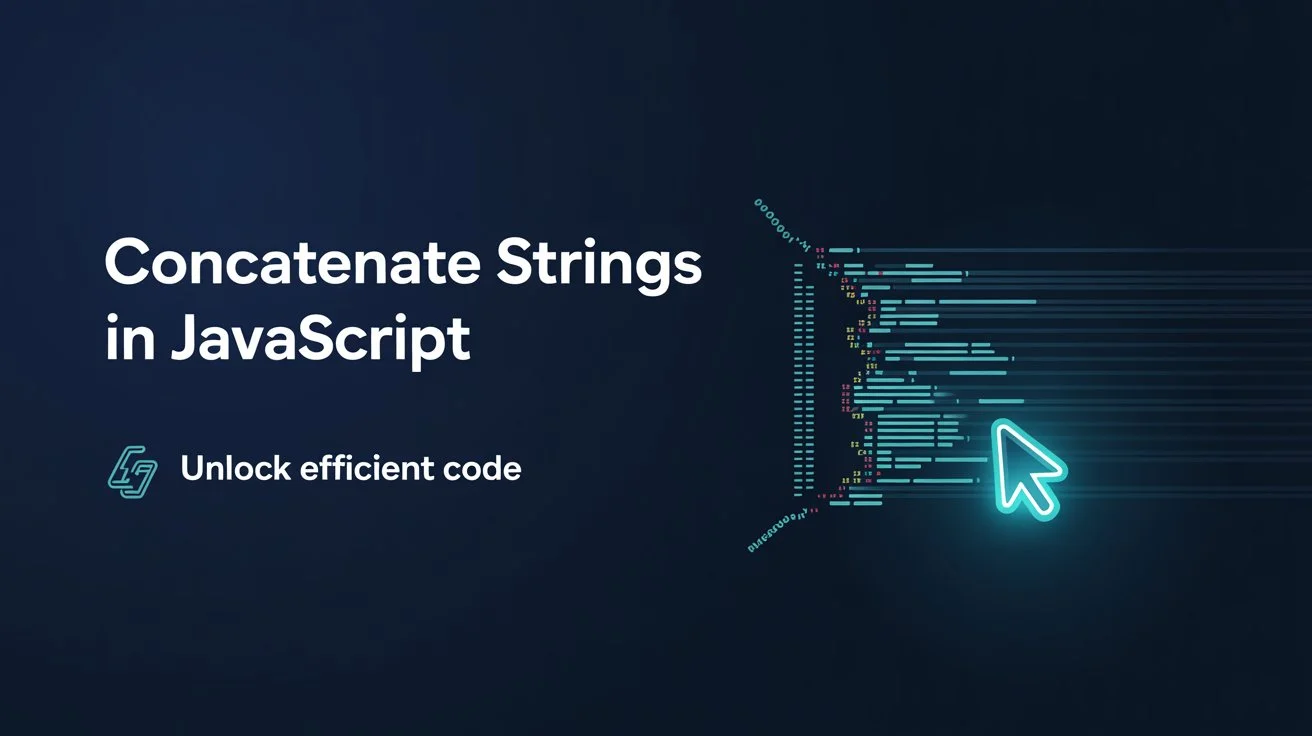Understanding the this
keyword and the bind()
method is crucial for writing robust JavaScript applications. The this keyword's dynamic
nature can lead to unexpected behavior, especially when functions are passed as callbacks or used in different
contexts. The bind()
method provides a powerful solution by allowing you to explicitly control the context in which functions execute.
This comprehensive guide explores everything you need to know about JavaScript's bind() method and this binding. From
fundamental concepts to advanced techniques, you'll learn how to handle callbacks, implement partial application,
manage event handlers, and avoid common pitfalls that plague many JavaScript developers.
Understanding the this Keyword in JavaScript
The this keyword in
JavaScript refers to the object that is executing the current function. Unlike many other programming languages,
this in JavaScript is
determined by how a function is called, not where it is defined. This dynamic binding can be both
powerful and confusing.
The Four Rules of this Binding
JavaScript follows four primary rules to determine what this refers to:
1. Default Binding
When a function is called in the global scope (not as a method of an object), this refers to the global
object. In browsers, this is the window object.
function showThis() {
console.log(this);
}
showThis(); // Logs: Window {...} (in browsers)
// In strict mode
'use strict';
function showThisStrict() {
console.log(this);
}
showThisStrict(); // Logs: undefined2. Implicit Binding
When a function is called as a method of an object, this refers to that object.
const person = {
name: 'Alice',
greet() {
console.log(`Hello, I'm ${this.name}`);
}
};
person.greet(); // Logs: "Hello, I'm Alice"
// this refers to the person object3. Explicit Binding
You can explicitly set this using call(), apply(), or bind().
function greet() {
console.log(`Hello, I'm ${this.name}`);
}
const person1 = { name: 'Bob' };
const person2 = { name: 'Charlie' };
greet.call(person1); // Logs: "Hello, I'm Bob"
greet.apply(person2); // Logs: "Hello, I'm Charlie"4. New Binding
When a function is called with the new keyword, this refers to the newly
created object.
function Person(name) {
this.name = name;
this.greet = function() {
console.log(`Hello, I'm ${this.name}`);
};
}
const person = new Person('David');
person.greet(); // Logs: "Hello, I'm David"The Problem: Lost Context
One of the most common issues with this occurs when you pass
object methods as callbacks. The method loses its original context:
const user = {
name: 'Eve',
greet() {
console.log(`Hello, I'm ${this.name}`);
}
};
// This works fine
user.greet(); // Logs: "Hello, I'm Eve"
// But this doesn't work as expected
setTimeout(user.greet, 1000); // Logs: "Hello, I'm undefined"
// or "Hello, I'm [object Window]" in non-strict mode
The problem is that setTimeout receives the
function user.greet
without its original context. When the function executes, this is no longer bound to
the user object.
Introducing the bind() Method
The bind() method
creates a new function that, when called, has its this value set to a
specified value. Unlike call() and apply(), bind() doesn't immediately
invoke the function but returns a new bound function.
Basic Syntax
function.bind(thisArg[, arg1[, arg2[, ...]]])Parameters:
thisArg: The value to be passed asthisto the target functionarg1, arg2, ...: Arguments to prepend to arguments provided to the bound function
Basic Usage Example
const user = {
name: 'Frank',
greet() {
console.log(`Hello, I'm ${this.name}`);
}
};
// Create a bound function
const boundGreet = user.greet.bind(user);
// Now this works correctly
setTimeout(boundGreet, 1000); // Logs: "Hello, I'm Frank"
// The bound function can be called multiple times
boundGreet(); // Logs: "Hello, I'm Frank"
boundGreet(); // Logs: "Hello, I'm Frank"Use Case 1: Preserving Context in Callbacks
The most common use case for bind() is preserving the
original context when passing methods as callbacks to other functions.
Array Methods
class Calculator {
constructor() {
this.result = 0;
}
add(value) {
this.result += value;
return this;
}
multiply(value) {
this.result *= value;
return this;
}
getResult() {
return this.result;
}
}
const calc = new Calculator();
// Without bind - this will fail
const numbers = [1, 2, 3, 4, 5];
// numbers.forEach(calc.add); // TypeError: Cannot read property 'result' of undefined
// With bind - this works correctly
numbers.forEach(calc.add.bind(calc));
console.log(calc.getResult()); // 15 (1+2+3+4+5)Event Handlers
class Button {
constructor(element, label) {
this.element = element;
this.label = label;
this.clickCount = 0;
// Bind the method to preserve context
this.handleClick = this.handleClick.bind(this);
// Add event listener
this.element.addEventListener('click', this.handleClick);
}
handleClick() {
this.clickCount++;
console.log(`Button "${this.label}" clicked ${this.clickCount} times`);
}
destroy() {
this.element.removeEventListener('click', this.handleClick);
}
}
// Usage
const buttonElement = document.querySelector('#myButton');
const button = new Button(buttonElement, 'Submit');Promise and Async Operations
class DataService {
constructor() {
this.baseUrl = 'https://api.example.com';
this.cache = new Map();
}
async fetchData(endpoint) {
const url = `${this.baseUrl}${endpoint}`;
if (this.cache.has(url)) {
return this.cache.get(url);
}
try {
const response = await fetch(url);
const data = await response.json();
this.cache.set(url, data);
return data;
} catch (error) {
console.error(`Failed to fetch ${url}:`, error);
throw error;
}
}
// Method that needs to be bound when used as callback
handleSuccess(data) {
console.log('Data fetched successfully:', data);
this.processData(data);
}
processData(data) {
// Process the data
console.log('Processing data...');
}
}
const service = new DataService();
// Using bind to preserve context
fetch('/api/data')
.then(response => response.json())
.then(service.handleSuccess.bind(service))
.catch(error => console.error('Error:', error));Use Case 2: Partial Application
Partial application is a technique where you create a new function by pre-filling some of the arguments of an
existing function. bind() makes this easy by
allowing you to specify initial arguments.
Mathematical Operations
// Basic math functions
function multiply(a, b) {
return a * b;
}
function add(a, b) {
return a + b;
}
// Create specialized functions using partial application
const double = multiply.bind(null, 2);
const triple = multiply.bind(null, 3);
const addTen = add.bind(null, 10);
console.log(double(5)); // 10 (2 * 5)
console.log(triple(4)); // 12 (3 * 4)
console.log(addTen(7)); // 17 (10 + 7)
// You can also bind multiple arguments
function calculate(a, b, c, d) {
return (a + b) * (c - d);
}
const calculateWithFixedValues = calculate.bind(null, 10, 5, 8, 2);
console.log(calculateWithFixedValues()); // 45 ((10 + 5) * (8 - 2))String Formatting
function formatMessage(template, name, age, city) {
return template
.replace('{name}', name)
.replace('{age}', age)
.replace('{city}', city);
}
// Create specialized formatters
const welcomeTemplate = 'Welcome {name}! You are {age} years old and live in {city}.';
const goodbyeTemplate = 'Goodbye {name}! Safe travels from {city}.';
const formatWelcome = formatMessage.bind(null, welcomeTemplate);
const formatGoodbye = formatMessage.bind(null, goodbyeTemplate);
console.log(formatWelcome('Alice', 25, 'New York'));
// "Welcome Alice! You are 25 years old and live in New York."
console.log(formatGoodbye('Bob', 30, 'San Francisco'));
// "Goodbye Bob! Safe travels from San Francisco."API Request Builder
class ApiClient {
constructor(baseUrl, apiKey) {
this.baseUrl = baseUrl;
this.apiKey = apiKey;
}
makeRequest(method, endpoint, data = null) {
const url = `${this.baseUrl}${endpoint}`;
const headers = {
'Authorization': `Bearer ${this.apiKey}`,
'Content-Type': 'application/json'
};
const options = {
method,
headers
};
if (data) {
options.body = JSON.stringify(data);
}
return fetch(url, options);
}
// Create bound methods for common HTTP methods
get(endpoint) {
return this.makeRequest('GET', endpoint);
}
post(endpoint, data) {
return this.makeRequest('POST', endpoint, data);
}
put(endpoint, data) {
return this.makeRequest('PUT', endpoint, data);
}
delete(endpoint) {
return this.makeRequest('DELETE', endpoint);
}
}
const api = new ApiClient('https://api.example.com', 'your-api-key');
// Using the bound methods
api.get('/users')
.then(response => response.json())
.then(data => console.log('Users:', data));
api.post('/users', { name: 'John', email: '[email protected]' })
.then(response => response.json())
.then(data => console.log('Created user:', data));Use Case 3: Class Methods and React Components
In class-based components, especially in React, bind() is commonly used to
ensure methods have the correct this context.
React Class Component Example
class Counter extends React.Component {
constructor(props) {
super(props);
this.state = {
count: 0
};
// Bind methods in constructor to preserve context
this.increment = this.increment.bind(this);
this.decrement = this.decrement.bind(this);
this.reset = this.reset.bind(this);
}
increment() {
this.setState(prevState => ({
count: prevState.count + 1
}));
}
decrement() {
this.setState(prevState => ({
count: prevState.count - 1
}));
}
reset() {
this.setState({ count: 0 });
}
render() {
return (
<div>
<h2>Count: {this.state.count}</h2>
<button onClick={this.increment}>+</button>
<button onClick={this.decrement}>-</button>
<button onClick={this.reset}>Reset</button>
</div>
);
}
}Alternative: Arrow Functions in Class Properties
class Counter extends React.Component {
state = {
count: 0
};
// Arrow functions automatically bind 'this'
increment = () => {
this.setState(prevState => ({
count: prevState.count + 1
}));
}
decrement = () => {
this.setState(prevState => ({
count: prevState.count - 1
}));
}
reset = () => {
this.setState({ count: 0 });
}
render() {
return (
<div>
<h2>Count: {this.state.count}</h2>
<button onClick={this.increment}>+</button>
<button onClick={this.decrement}>-</button>
<button onClick={this.reset}>Reset</button>
</div>
);
}
}Comparing bind(), call(), and apply()
While bind(), call(), and apply() all allow you to
set the this value,
they behave differently:
Key Differences
function greet(greeting, punctuation) {
console.log(`${greeting}, I'm ${this.name}${punctuation}`);
}
const person = { name: 'Alice' };
// call() - immediately invokes the function
greet.call(person, 'Hello', '!'); // "Hello, I'm Alice!"
// apply() - immediately invokes the function, arguments as array
greet.apply(person, ['Hi', '?']); // "Hi, I'm Alice?"
// bind() - returns a new function, doesn't invoke immediately
const boundGreet = greet.bind(person, 'Hey', '.');
boundGreet(); // "Hey, I'm Alice."
// You can also call the bound function with additional arguments
const boundGreet2 = greet.bind(person, 'Hello');
boundGreet2('!'); // "Hello, I'm Alice!"When to Use Each Method
- Use
call(): When you want to invoke a function immediately with a specificthisvalue and individual arguments - Use
apply(): When you want to invoke a function immediately with a specificthisvalue and an array of arguments - Use
bind(): When you want to create a new function with a boundthisvalue for later use
Advanced Examples and Patterns
Method Borrowing
You can use bind() to
borrow methods from one object and use them on another:
const person1 = {
name: 'Alice',
greet() {
console.log(`Hello, I'm ${this.name}`);
}
};
const person2 = {
name: 'Bob'
};
// Borrow the greet method from person1 and use it on person2
const borrowedGreet = person1.greet.bind(person2);
borrowedGreet(); // "Hello, I'm Bob"
// You can also use call or apply for one-time borrowing
person1.greet.call(person2); // "Hello, I'm Bob"Currying with bind()
Currying is a technique where you transform a function that takes multiple arguments into a sequence of functions that each take a single argument:
function multiply(a, b, c) {
return a * b * c;
}
// Create curried versions
const multiplyBy2 = multiply.bind(null, 2);
const multiplyBy2And3 = multiply.bind(null, 2, 3);
console.log(multiplyBy2(3, 4)); // 24 (2 * 3 * 4)
console.log(multiplyBy2And3(4)); // 24 (2 * 3 * 4)
// More complex currying example
function createUrl(protocol, domain, path, query) {
return `${protocol}://${domain}${path}${query ? '?' + query : ''}`;
}
const createHttpsUrl = createUrl.bind(null, 'https');
const createApiUrl = createHttpsUrl.bind(null, 'api.example.com');
const createUsersUrl = createApiUrl.bind(null, '/users');
console.log(createUsersUrl('?page=1')); // "https://api.example.com/users?page=1"
console.log(createUsersUrl('?page=2')); // "https://api.example.com/users?page=2"Event Delegation with bind()
class EventManager {
constructor() {
this.handlers = new Map();
}
addHandler(element, eventType, handler, context) {
const boundHandler = handler.bind(context);
this.handlers.set(`${element}-${eventType}`, boundHandler);
element.addEventListener(eventType, boundHandler);
}
removeHandler(element, eventType) {
const key = `${element}-${eventType}`;
const handler = this.handlers.get(key);
if (handler) {
element.removeEventListener(eventType, handler);
this.handlers.delete(key);
}
}
}
class Component {
constructor(name) {
this.name = name;
this.eventManager = new EventManager();
}
handleClick(event) {
console.log(`Component ${this.name} was clicked!`);
console.log('Event target:', event.target);
}
attachToElement(element) {
this.eventManager.addHandler(element, 'click', this.handleClick, this);
}
detachFromElement(element) {
this.eventManager.removeHandler(element, 'click');
}
}
// Usage
const button = document.querySelector('#myButton');
const component = new Component('MyComponent');
component.attachToElement(button);Performance Considerations
While bind() is
powerful, it's important to understand its performance implications:
Memory Usage
Each call to bind()
creates a new function object. In performance-critical applications, this can lead to memory overhead:
// This creates a new function every time
function processItems(items, processor) {
return items.map(item => processor.bind(this, item));
}
// Better approach - create bound functions once
class ItemProcessor {
constructor() {
this.processItem = this.processItem.bind(this);
}
processItem(item) {
// Process the item
return item * 2;
}
processItems(items) {
return items.map(this.processItem);
}
}Performance Comparison
// Performance test
function performanceTest() {
const obj = { value: 42 };
const iterations = 1000000;
// Test 1: Direct method call
console.time('Direct call');
for (let i = 0; i < iterations; i++) {
obj.getValue = function() { return this.value; };
obj.getValue();
}
console.timeEnd('Direct call');
// Test 2: Bound function (created once)
const boundGetValue = function() { return this.value; }.bind(obj);
console.time('Bound function (once)');
for (let i = 0; i < iterations; i++) {
boundGetValue();
}
console.timeEnd('Bound function (once)');
// Test 3: Bound function (created every time)
console.time('Bound function (every time)');
for (let i = 0; i < iterations; i++) {
const bound = function() { return this.value; }.bind(obj);
bound();
}
console.timeEnd('Bound function (every time)');
}
performanceTest();Common Pitfalls and How to Avoid Them
Pitfall 1: Binding Arrow Functions
Arrow functions don't have their own this context, so binding
them has no effect:
const obj = {
name: 'Alice',
regularFunction() {
console.log(this.name);
},
arrowFunction: () => {
console.log(this.name); // 'this' refers to the global object
}
};
// This works
obj.regularFunction(); // "Alice"
// This doesn't work as expected
obj.arrowFunction(); // undefined (or global object property)
// Binding arrow functions has no effect
const boundArrow = obj.arrowFunction.bind(obj);
boundArrow(); // Still undefinedPitfall 2: Losing Method Chaining
Bound functions don't preserve the original function's prototype, which can break method chaining:
class Calculator {
constructor(value = 0) {
this.value = value;
}
add(num) {
this.value += num;
return this; // Return this for chaining
}
multiply(num) {
this.value *= num;
return this;
}
getValue() {
return this.value;
}
}
const calc = new Calculator(5);
// This works fine
calc.add(3).multiply(2).getValue(); // 16
// But this breaks chaining
const boundAdd = calc.add.bind(calc);
boundAdd(3).multiply(2); // TypeError: boundAdd(...).multiply is not a function
// Solution: Don't bind methods that need to be chained
// Or create a wrapper that preserves chaining
class BoundCalculator {
constructor(calculator) {
this.calc = calculator;
}
add(num) {
this.calc.add(num);
return this;
}
multiply(num) {
this.calc.multiply(num);
return this;
}
getValue() {
return this.calc.getValue();
}
}Pitfall 3: Overusing bind()
While bind() is useful,
overusing it can make code harder to read and maintain:
// Overuse of bind() - hard to read
class OverlyBound {
constructor() {
this.method1 = this.method1.bind(this);
this.method2 = this.method2.bind(this);
this.method3 = this.method3.bind(this);
this.method4 = this.method4.bind(this);
this.method5 = this.method5.bind(this);
}
method1() { /* ... */ }
method2() { /* ... */ }
method3() { /* ... */ }
method4() { /* ... */ }
method5() { /* ... */ }
}
// Better approach - use arrow functions or bind only when needed
class BetterApproach {
// Use arrow functions for methods that need 'this'
method1 = () => {
// This automatically binds 'this'
}
// Regular methods for methods that don't need binding
method2() {
// This doesn't need 'this' binding
}
// Bind only when passing as callbacks
handleEvent() {
// This method
}
attachEvent() {
element.addEventListener('click', this.handleEvent.bind(this));
}
}Modern Alternatives to bind()
While bind() is still
widely used, modern JavaScript provides several alternatives:
Arrow Functions
Arrow functions automatically capture this from their enclosing
scope:
class ModernComponent {
constructor() {
this.name = 'ModernComponent';
}
// Old way with bind()
oldMethod() {
console.log(this.name);
}
setupOldWay() {
setTimeout(this.oldMethod.bind(this), 1000);
}
// New way with arrow functions
setupNewWay() {
setTimeout(() => {
console.log(this.name);
}, 1000);
}
// Arrow function as class property
handleClick = () => {
console.log(this.name);
}
}Class Fields (ES2022)
class ModernClass {
// Class fields are automatically bound
handleClick = () => {
console.log('Clicked!');
}
handleSubmit = (event) => {
event.preventDefault();
console.log('Submitted!');
}
// Regular methods still need binding if used as callbacks
regularMethod() {
console.log('Regular method');
}
setupEventListeners() {
// Arrow function properties work without binding
button.addEventListener('click', this.handleClick);
// Regular methods still need binding
form.addEventListener('submit', this.handleSubmit);
}
}Function Composition
Instead of using bind()
for partial application, you can use function composition:
// Instead of bind() for partial application
const multiply = (a, b) => a * b;
const double = multiply.bind(null, 2);
// Use function composition
const compose = (f, g) => (x) => f(g(x));
const addOne = (x) => x + 1;
const doubleAndAddOne = compose(addOne, (x) => multiply(2, x));
console.log(doubleAndAddOne(5)); // 11
// Or use a more functional approach
const createMultiplier = (factor) => (value) => value * factor;
const double2 = createMultiplier(2);
const triple = createMultiplier(3);
console.log(double2(5)); // 10
console.log(triple(4)); // 12Real-World Examples
Example 1: Form Validation System
class FormValidator {
constructor() {
this.rules = new Map();
this.errors = new Map();
}
addRule(fieldName, validator, errorMessage) {
if (!this.rules.has(fieldName)) {
this.rules.set(fieldName, []);
}
this.rules.get(fieldName).push({ validator, errorMessage });
}
validateField(fieldName, value) {
const fieldRules = this.rules.get(fieldName) || [];
const errors = [];
fieldRules.forEach(({ validator, errorMessage }) => {
if (!validator(value)) {
errors.push(errorMessage);
}
});
this.errors.set(fieldName, errors);
return errors.length === 0;
}
validateForm(formData) {
let isValid = true;
for (const [fieldName, value] of Object.entries(formData)) {
if (!this.validateField(fieldName, value)) {
isValid = false;
}
}
return isValid;
}
getErrors(fieldName) {
return this.errors.get(fieldName) || [];
}
// Method that needs to be bound when used as callback
handleFieldChange(event) {
const fieldName = event.target.name;
const value = event.target.value;
this.validateField(fieldName, value);
this.updateFieldDisplay(fieldName);
}
updateFieldDisplay(fieldName) {
const errors = this.getErrors(fieldName);
const fieldElement = document.querySelector(`[name="${fieldName}"]`);
if (errors.length > 0) {
fieldElement.classList.add('error');
this.showErrors(fieldName, errors);
} else {
fieldElement.classList.remove('error');
this.hideErrors(fieldName);
}
}
showErrors(fieldName, errors) {
// Show error messages
}
hideErrors(fieldName) {
// Hide error messages
}
}
// Usage
const validator = new FormValidator();
// Add validation rules
validator.addRule('email', (value) => /^[^\s@]+@[^\s@]+\.[^\s@]+$/.test(value), 'Invalid email format');
validator.addRule('password', (value) => value.length >= 8, 'Password must be at least 8 characters');
// Bind the method for use as event handler
const emailField = document.querySelector('[name="email"]');
emailField.addEventListener('input', validator.handleFieldChange.bind(validator));Example 2: API Client with Retry Logic
class ApiClient {
constructor(baseUrl, options = {}) {
this.baseUrl = baseUrl;
this.retryAttempts = options.retryAttempts || 3;
this.retryDelay = options.retryDelay || 1000;
this.timeout = options.timeout || 5000;
}
async makeRequest(endpoint, options = {}) {
const url = `${this.baseUrl}${endpoint}`;
const requestOptions = {
timeout: this.timeout,
...options
};
for (let attempt = 1; attempt <= this.retryAttempts; attempt++) {
try {
const response = await fetch(url, requestOptions);
if (!response.ok) {
throw new Error(`HTTP ${response.status}: ${response.statusText}`);
}
return await response.json();
} catch (error) {
if (attempt === this.retryAttempts) {
throw error;
}
console.warn(`Request failed (attempt ${attempt}/${this.retryAttempts}):`, error.message);
await this.delay(this.retryDelay * attempt);
}
}
}
delay(ms) {
return new Promise(resolve => setTimeout(resolve, ms));
}
// Methods that need to be bound when used as callbacks
handleSuccess(data) {
console.log('Request successful:', data);
this.processData(data);
}
handleError(error) {
console.error('Request failed:', error);
this.showError(error.message);
}
processData(data) {
// Process the received data
}
showError(message) {
// Show error to user
}
}
// Usage
const apiClient = new ApiClient('https://api.example.com');
// Using bind() to preserve context in promise chains
apiClient.makeRequest('/users')
.then(apiClient.handleSuccess.bind(apiClient))
.catch(apiClient.handleError.bind(apiClient));
// Alternative: Use arrow functions
apiClient.makeRequest('/users')
.then(data => {
console.log('Request successful:', data);
apiClient.processData(data);
})
.catch(error => {
console.error('Request failed:', error);
apiClient.showError(error.message);
});Best Practices and Recommendations
When to Use bind()
- Event handlers: When you need to pass object methods as event handlers
- Callbacks: When passing methods to functions that expect callbacks
- Partial application: When you want to create specialized functions with pre-filled arguments
- Method borrowing: When you want to use a method from one object on another object
When NOT to Use bind()
- Arrow functions: Arrow functions don't have their own
this, so binding them is pointless - Performance-critical code: Creating bound functions repeatedly can impact performance
- Method chaining: Bound functions don't preserve the original function's prototype
- Modern alternatives available: Use arrow functions or class fields when possible
Performance Tips
- Create bound functions once: Bind methods in the constructor or as class properties
- Avoid binding in loops: Don't create bound functions inside loops or frequently called functions
- Use arrow functions when possible: They're often more performant than bound functions
- Consider the alternatives: Modern JavaScript provides better alternatives in many cases
Code Quality Guidelines
- Be consistent: Choose one approach and stick with it throughout your codebase
- Document your choices: Add comments explaining why you're using
bind() - Test thoroughly: Make sure your bound functions work correctly in all scenarios
- Consider readability: Sometimes explicit arrow functions are clearer than bound methods
Browser Compatibility
The bind() method has
excellent browser support:
- Modern browsers: Full support in all modern browsers
- Internet Explorer: Supported in IE9+
- Mobile browsers: Supported in all modern mobile browsers
- Node.js: Supported in all versions
Polyfill for Older Browsers
If you need to support very old browsers, here's a simple polyfill:
// Polyfill for Function.prototype.bind
if (!Function.prototype.bind) {
Function.prototype.bind = function(thisArg) {
if (typeof this !== 'function') {
throw new TypeError('Function.prototype.bind - what is trying to be bound is not callable');
}
var args = Array.prototype.slice.call(arguments, 1);
var fn = this;
var fNOP = function() {};
var fBound = function() {
return fn.apply(
this instanceof fNOP ? this : thisArg,
args.concat(Array.prototype.slice.call(arguments))
);
};
fNOP.prototype = this.prototype;
fBound.prototype = new fNOP();
return fBound;
};
}Conclusion
The bind() method is a
powerful tool for controlling the this context in JavaScript
functions. Understanding when and how to use it is essential for writing robust, maintainable JavaScript code.
From handling callbacks and event handlers to implementing partial application and method borrowing, bind() provides solutions
to many common programming challenges.
However, it's important to remember that modern JavaScript offers several alternatives to bind(). Arrow functions,
class fields, and function composition can often provide cleaner, more readable solutions. The key is to choose
the right tool for the job and maintain consistency throughout your codebase.
By mastering the concepts covered in this guide-from the fundamental rules of this binding to advanced
patterns and performance considerations-you'll be well-equipped to handle any context-related challenges in your
JavaScript applications. Whether you're building simple web pages or complex enterprise applications,
understanding bind()
and this will help you
write more predictable, maintainable, and efficient code.
Remember that the best approach is often the simplest one that solves your problem effectively. Don't overuse
bind() when simpler
alternatives exist, but don't shy away from it when it's the right tool for the job. With practice and
understanding, you'll develop an intuition for when to use bind() and when to choose
other approaches.




